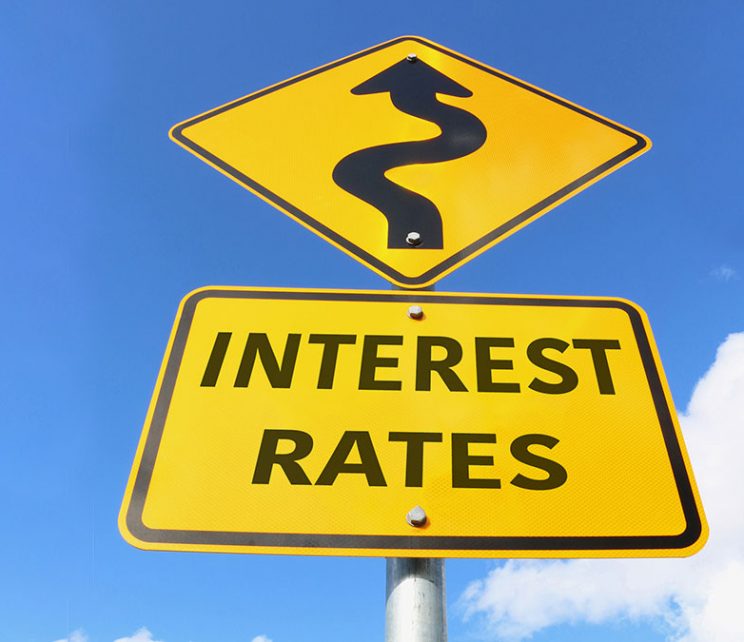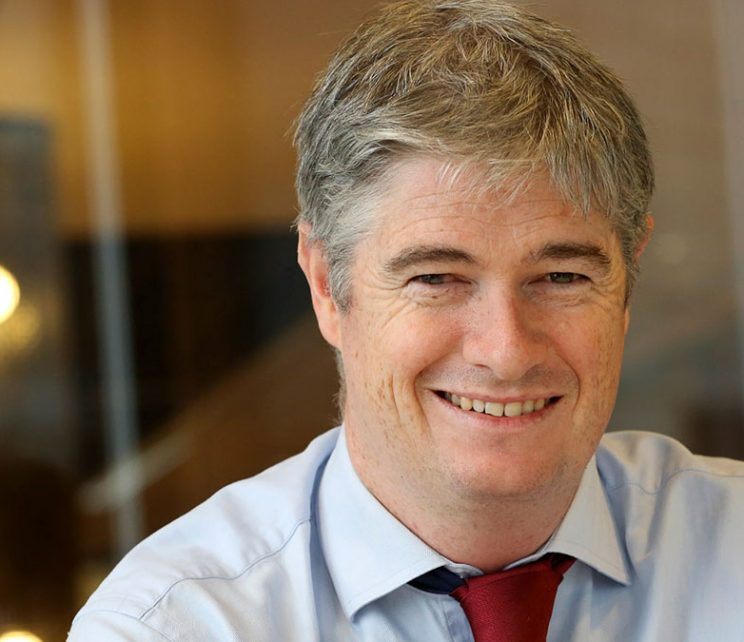
Mainstream Online Web Portal
LoginInvestors can view their accounts online via a secure web portal. After registering, you can access your account balances, periodical statements, tax statements, transaction histories and distribution statements / details.
Advisers will also have access to view their clients’ accounts online via the secure web portal.
The Point
Quick, actionable insights for investors
Income and Fixed Interest

Steve Campbell: A straight bat from the RBA
Those looking for near-term rate cuts from the Reserve Bank will be disappointed with the commentary around this week’s no-change decision.
The RBA retains a tightening bias, refusing to rule out a further increase in rates.
“It’s clear the RBA is not comfortable with where inflation currently sits,” says our head of cash strategies Steve Campbell.
“There have been some solid misses and revisions to the RBA’s forecasts in previous quarters that understandably weigh on their confidence.”
The RBA is responding to inflation – a backward-looking view of the economy, Steve says.
If it wasn’t for elevated inflation, the latest RBA monetary statement lays out an argument for easing to occur sooner rather than later, Steve says.
“This is what the market is looking at when it is pricing in the cash rate to be cut in Australia this year – that, and offshore markets that have priced in aggressive policy easing this year in the US, Europe and England.
“However, we still view any back-up in yields as a buying opportunity.
“The US is still likely to start cutting in May, and if it cuts at every meeting after, will hit 4% by the end of year. This would open up potential cuts later in the year for the RBA.”

Steve Campbell: No rate cuts – or rises – in 2024?
Quick view
Steve Campbell: No rate cuts – or rises – in 2024?
Aussies were spared further pain this week when the Reserve Bank left the cash rate unchanged at 4.35%.
In its statement, the RBA retained a tightening bias against an uncertain background.
While investors expect rate cuts offshore next year, Pendal’s head of cash strategies Steve Campbell sees our cash rate unchanged in 2024.
Q4 inflation is due out in late January, ahead of the next RBA meeting in February. Steve expects a headline rate of 0.8%, taking annual inflation to 4.2%.
“We can’t see how the RBA can achieve its end-of-year 4.5% forecast – and 0.3% would be a considerable miss.
“Inflation is likely to come down to 3.5% in 2024. But unless we see significant weakness, this will remain too high to warrant a rate cut.
“Though this won’t stop the market periodically pricing rate cuts in – opening opportunities to trade duration with a long bias into early 2024.”

Inflation won’t go down without a fight, but markets expect extended rate-hike pause
Quick view
Inflation won’t go down without a fight, but markets expect extended rate-hike pause
After Tuesday’s rate hike the RBA retains a tightening bias – though there’s nothing in its statement to suggest a follow-up hike in December.
Q4 inflation is out in late January and will determine if a move to 4.6% is required at the first meeting of the year in February, says Pendal’s head of cash strategies Steve Campbell.
Pendal’s income and fixed interest team expects a better-behaved quarterly inflation number – below 1% – which should take pressure off the RBA.
“The RBA is a reluctant hiker,” says Steve. “They’re aware of the lagging impact of monetary policy and they don’t want to overtighten.”
They would also be the stand-out central bank if they continued to raise the cash rate.
Bond markets believe we will join other central banks on an extended pause, notes Steve.

Steve Campbell: Expect rates to stay unchanged til 2024
Quick view
Steve Campbell: Expect rates to stay unchanged til 2024
Inflation is moving in the right direction and it’s likely we’ll see Christmas with rates still at 4.1% after the RBA again sat on its hands this week.
But any talk of rate cuts in the first half of next year should be discarded (barring a big, external shock), says Pendal’s head of cash strategies Steve Campbell.
“Inflation has peaked and the move lower will provide comfort for the RBA,” says Steve. “But services inflation remains uncomfortably high.
“It’s the level at which inflation gets sticky that’s key – and that’ll only become apparent in time.”
The RBA is not expecting inflation to return to its 2-3% target until mid-2025.
“That’s predicated on slowing economic growth, resulting in higher unemployment and easing wage inflation.”
Further policy tightening is likely only if those factors play out more slowly than the RBA expects, says Steve.

Got money in a global bond index fund? You should read this
Quick view
Got money in a global bond index fund? You should read this
Got money in a global bond index fund? Pendal’s head of multi-asset Michael Blayney has a note of caution for you.
Indexing bond investments appeals to many investors because it’s a low-cost way of incorporating diversified, defensive assets into a portfolio.
But global bond index funds have a hidden risk that may undermine their role in providing stability and defensiveness in portfolios.
That’s because global bond indicies tend to allocate higher weightings to the most indebted countries, which is a fundamental flaw, argues Michael.
“In bonds, it’s how indebted you are that determines your weight. Essentially, we are lending more to the people that owe the most money.”
Global bond benchmarks could be overweight to countries like China, Italy and emerging markets that might not pass a quality screen.

What’s behind the RBA’s surprise rate hike
Quick view
What’s behind the RBA’s surprise rate hike
The RBA surprised most people with this week’s quarter-point rate hike, just ahead of a similar move by the US Fed.
Justifying the decision, the RBA noted that services inflation remained very high and the offshore experience indicated upside risks.
Productivity growth was also anaemic, exerting upward pressure on labour costs, adding to the RBA’s concerns.
“Previously I expected any policy change would occur more likely in a quarterly sequence following the release of quarterly inflation data,” says our head of cash strategies, Steve Campbell.
“That has gone out the window. This week’s decision means the next RBA meeting in June is also a live meeting.”

Steve Campbell: RBA likely to wait for April data before a move in May
The RBA is getting close to pausing, but another rate rise is probable in May, says Pendal’s head of cash strategies STEVE CAMPBELL
The Reserve Bank lifted the cash rate for a tenth consecutive meeting earlier this week – up 0.25 percentage points to 3.6%.
“When and how much further interest rates need to increase” would depend on “developments in the global economy, trends in household spending and the outlook for inflation and the labour market”, the RBA said.
The next Australian labour market data is due on March 16.

Steve Campbell: Is it time to get into TDs? I say no, no, no
Quick view
Steve Campbell: Is it time to get into TDs? I say no, no, no
It’s a bad take on Amy Winehouse, but ‘no, no, no’ is bang-on when it comes to investing in term deposits right now, says head of cash Steve Campbell.
“The TD question is increasingly coming up as the Reserve Bank moves closer to pausing monetary policy tightening,” says Steve.
“In early 2022, after being starved for yields over an extended period, investors were awestruck with 1%+ yields on offer for 12-18-month tenors.
“At the time it looked great. I doubt those who locked in are feeling so happy now about the decision to tie liquidity up in a lower yielding asset.”
While there are a range of important differences between TDs and cash funds – including higher risk and price volatility for cash funds – Steve reckons access to liquidity will remain important this year.
“This year may not be as volatile as 2022, but I doubt calm waters lay ahead for the rest of 2023.”

Steve Campbell: RBA likely to move to quarterly tightening in 2023
Quick view
Steve Campbell: RBA likely to move to quarterly tightening in 2023
After this week’s 25-point rate hike, another 25 points is more likely than not in December, says our head of cash strategies Steve Campbell.
“Key uncertainties remain on the response of household spending to monetary policy tightening and a gloomier global economic outlook.
“Next year should see things change however, with policy tightening likely limited to one or two hikes.
“For many race-goers Tuesday was a tough day. That’s also the case for households with a variable mortgage.
“For households with fixed-rate mortgages mid-2023 and beyond is when the pain is really set to kick in with mortgage repayments about to increase sharply.
“The RBA is more than aware of this. It’s a reason not to overtighten in the first half of 2023.”

Fixed Interest: What’s next for rates and inflation
Quick view
Fixed Interest: What’s next for rates and inflation

What’s next after today’s 50bp rates hike
Quick view
What’s next after today’s 50bp rates hike

What today’s inflation data means for interest rates
Quick view
What today’s inflation data means for interest rates
Loading posts...
Loading posts...














